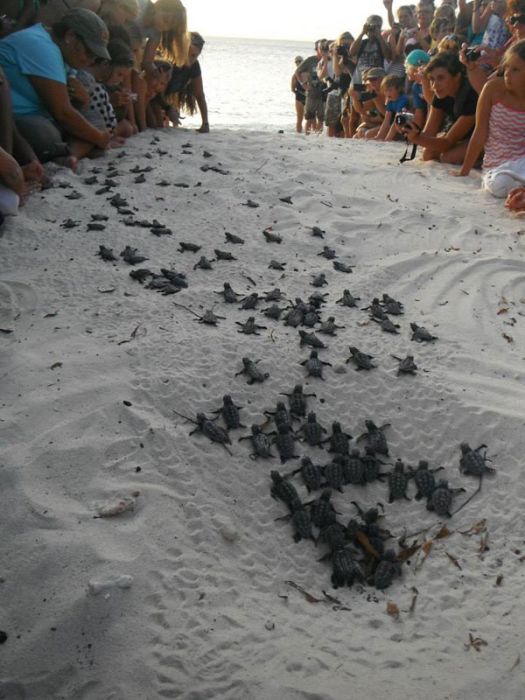|
|
Loggerhead Sea Turtle Hatchlings Guided To The Sea
|
Female loggerheads first reproduce between the ages of 17 and 33, and their mating period may last more than six weeks. They court their mates, but these behaviors have not been thoroughly examined. Male forms of courtship behavior include nuzzling, biting, and head and flipper movements. Studies suggest females produce cloacal pheromones to indicate reproductive ability. Before mating, the male approaches a female and attempts to mount her, while she resists. Next, the male and female begin to circle each other. If the male has competitors, the female may let the males struggle with each other. The winner then mounts the female; the male's curved claws usually damage the shoulders of the female's shell during this process. Other courting males bite the male while he is attempting to copulate, damaging his flippers and tail, possibly exposing bones. Such damage can cause the male to dismount and may require weeks to heal. While nesting, females produce an average of 3.9 egg clutches, and then become quiescent, producing no eggs for two to three years. Unlike other sea turtles, courtship and mating usually do not take place near the nesting beach, but rather along migration routes between feeding and breeding grounds. Recent evidence indicates ovulation in loggerheads is mating-induced. Through the act of mating, the female ovulates eggs which are fertilized by the male. This is unique, as mating-induced ovulation is rare outside of mammals. In the Northern Hemisphere, loggerheads mate from late March to early June. The nesting season is short, between May and August in the Northern Hemisphere and between October and March in the Southern Hemisphere.
Loggerheads may display multiple paternity. Multiple paternity is possible due to sperm storage. The female can store sperm from multiple males in her oviducts until ovulation. A single clutch may have as many as five fathers, each contributing sperm to a portion of the clutch. Multiple paternity and female size are positively correlated. Two hypotheses explain this correlation. One posits that males favor large females because of their perceived higher fecundity (ability to reproduce). The other states, because larger females are able to swim more quickly to mating grounds, they have longer mating periods.
All sea turtles have similar basic nesting behaviors. Females return to lay eggs at intervals of 12–17 days during the nesting season, on or near the beach where they hatched. They exit the water, climb the beach, and scrape away the surface sand to form a body pit. With their hind limbs, they excavate an egg chamber in which the eggs are deposited. The females then cover the egg chamber and body pit with sand, and finally return to the sea. This process takes one to two hours, and occurs in open sand areas or on top of sand dunes. The nesting area must be selected carefully because it affects characteristics such as fitness, emergence ratio, and vulnerability to nest predators. Loggerheads have an average clutch size of 112.4 eggs.
|
|









